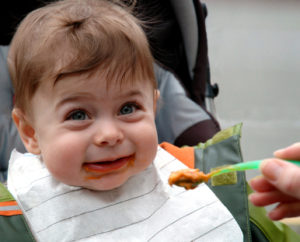Treatment for asthma attack – Follow asthma treatment guidelines and first aid procedures at home to give correct medication for asthma symptoms in children and in adults. Shift him to a hospital immediately if there is no response to the treatment given
What is the best treatment for asthma attack ?
Asthma is an allergic condition characterized by attacks of difficult breathing and often begins in childhood and may last throughout life. It tends to occur in families and it tends to be worse at night and during winter. An acute attack may be caused by eating or breathing things to which the person is allergic.
There is a spasm of the windpipe and its branches, so that breathing becomes difficult. The condition is diagnosed by the following features. The child gets breathless and a wheezing sound is heard during his breathing.
He cannot get enough air. So his nails and lips may turn blue and the neck veins may be distended.
First aid treatment for asthma attack in children and adults
Reassure the child. Never panic and keep yourself calm. Ask him to take his usual medication, which may be in the form of an inhalation spray or tablets.
Make him sit at a place that is warm and airy at home. Loosen any tight clothing. Steam inhalation may also help. Shift him to a hospital immediately if there is no response to the treatment given.
Most asthmatic children have allergies which bring on the attacks, but emotional upsets, temperature changes, pollution, exercise and infection can also bring on attacks. By far the commonest allergy is to domestic house dust – specifically to the house dust mite.
Children may also be allergic to grass pollen, pets, feathers in pillows, mould, foods and many other things. The rising pollution levels in metro cities are contributing in a big way to a dangerous increase in Asthmatic patients.
Prevention is the best cure. Avoidance of any known allergic substances is the most obvious starting point, but this can be difficult in practice.
Drugs help greatly to prevent attacks and some children can be adequately protected against certain allergies by having a course of desensitizing injections.
A happy and relaxed family atmosphere and parents who understand the disease, makes a real difference to the number of attacks a child has.
Most parents get to know when their child is about to have an attack because he becomes pale and lethargic, coughs and has a running nose. If you have any prescribed drugs, use them at this stage and you may abort an attack.
There are four positions in which your child might be more comfortable – see which suits him best during an attack.
- Lying on one side, slightly rolled forward with the knees bent
- The top leg should be in front of the one underneath.
- Lying on one side as in, but on a slope of three or four pillows with an extra pillow filling in the gap between waist and armpit.
- Sitting or kneeling forward against a chair, with the upper chest supported by pillows and the back straight; or sitting, leaning forward with a straight back, arms resting on thighs.
Get your child into one of these positions and get him to do diaphragmatic breathing (breathing from waist level rather than from the chest). He will need to be taught this by his doctor or physiotherapist.
It is worth practicing the breathing with the child everyday so that when he has an attack it may seem natural to him to breathe this way.
Should your child not respond to these simple measures, call your doctor. Do not let the situation get worse because it will then be much more difficult to treat. A very bad attack may mean the child will have to go into hospital.
It is important to follow the correct treatment for asthma attack guidelines and procedures in all cases.
RELATED TOPICS
Best hospitals in North Carolina
Air travel with medical conditions

